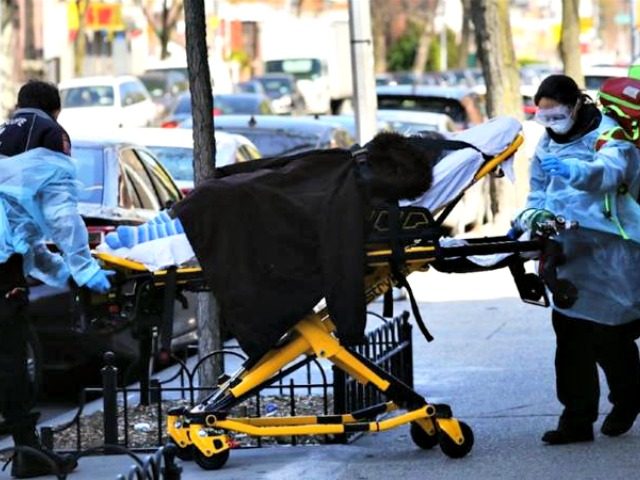Coronavirus-linked deaths across the U.S. have been dropping over the past few weeks, even as the country hit record levels in the number of new confirmed cases in recent days, a Breitbart News analysis of the seven-day average of fatalities revealed.
Most coronavirus databases rely on moving averages of cases and deaths because the numbers fluctuate day-by-day.
Although the seven-day average of fatalities had been steadily dropping in recent weeks, it appears to have stabilized in the last few days at a level well below its peak.
The reported number of daily deaths related to COVID-19, the disease associated with the coronavirus, is not paralleling the number of new cases.
Not everyone who contracts COVID-19 succumbs to the disease. The vast majority of fatalities involve seniors and individuals with chronic underlying health conditions.
Some mainstream media outlets reported that the daily number of cases hit a daily record of more than 47,000 on Tuesday.
Last Friday, the United States reportedly saw its second-highest single-day number of new confirmed cases at over 45,000.
There is a patchwork of guidelines across the United States for reporting deaths, with some states reporting probable coronavirus fatalities, while others do not.
Some databases provided a lower estimate for the reported number of deaths on Tuesday, while others offered a higher one.
There tends to be a lag time between infection and death, so the number of fatalities could spike in the next couple of weeks.
However, as of Tuesday, the seven-day average of deaths stood well below its peak level despite what the New York Times described as two “days with a data reporting anomaly” from NYC after the city released additional fatalities that drove the overall numbers in the U.S. up on June 25 and June 30.
Breitbart News learned of the fairly steady plunge over the last few weeks in the number of daily new deaths from several databases, maintained by the Times, COVID-Tracking Project, the Institute for Health Metrics and Evaluation (IHME) at the University of Washington, and USAFacts.org cited by the U.S. Centers of Disease Control and Prevention (CDC).
In the top ten U.S. states ranked by population, the seven-day average of deaths had been going down or remained steady as of Wednesday afternoon, without exceeding their peak levels despite the increase in cases, the COVID Tracking Project revealed.
Those states, which house some of the hardest-hit and most populated cities in America, are California, Texas, Florida, New York, Pennsylvania, Illinois, Ohio, Georgia, North Carolina, and Michigan.
California was the first state to order a lockdown to stem the spread of COVID-19 while Georgia was the first one to reopen.
The seven-day average of new deaths in the counties that house the most populous cities in the United States, tells a slightly different story — New York County, Los Angeles County, Cook County (Chicago), Harris County (Houston), Maricopa County (Phoenix), Philadelphia County, Bexar Country (San Antonio), San Diego County, Dallas County, and Santa Clara County (San Jose).
In most of those counties, the daily number of deaths has either gone down (New York, Cook, Santa Clara, Philadelphia) or remained reasonably steady in recent weeks (Los Angeles, Bexar, and San Diego), data compiled by USAFacts.org showed.
The remaining three counties saw moderate to significant increases in the number of deaths reported each day ( Dallas, Maricopa, and Harris)
Of the ten counties that house the most populated cities in America, only Harris (Houston) exceeded its peak level number of daily deaths over the last weeks. Arizona, Texas, Florida, and California have become some of the hardest-hit states as far as new infections are concerned.
The first and only wave of coronavirus cases that reportedly began in January has moved from its initial epicenter on the east coast, mainly New York, to the southern and western parts of the United States.
Some of the most populous states and cities have paused or rolled back their reopening plans to deal with the spike in cases.
This week, CDC Director Robert Redfield attributed the spike in cases across the United States to “many factors to include increased testing, community transmission, and outbreaks in settings such as nursing homes and occupational settings.”

COMMENTS
Please let us know if you're having issues with commenting.